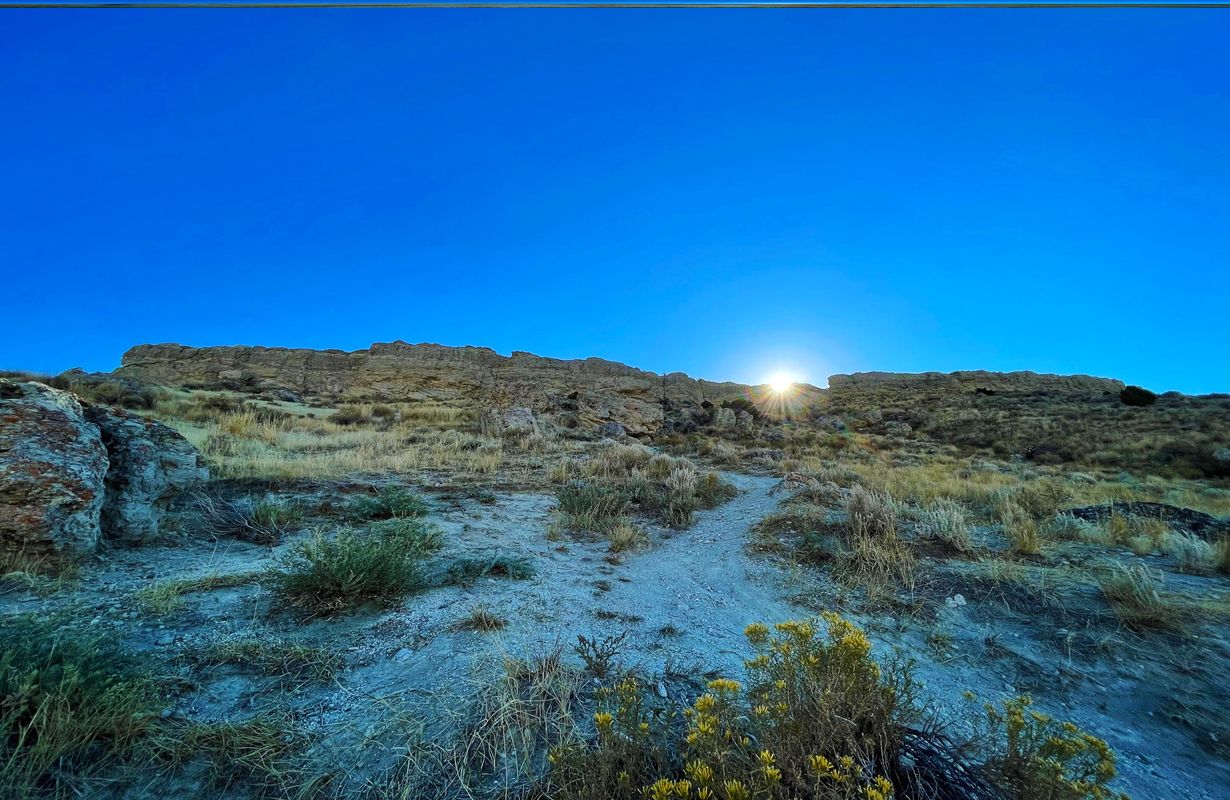Secrets Of Montana’s Sacred Buffalo Jumps

Have you ever wondered about the ancient hunting techniques of Native American tribes? Montana's buffalo jumps hold the key to understanding these fascinating methods. For thousands of years, tribes like the Blackfeet used these natural cliffs to hunt buffalo efficiently. By driving herds over the edge, they ensured a plentiful supply of meat, hides, and bones for their communities. Visiting these sites today offers a glimpse into a rich cultural history and a chance to appreciate the ingenuity of early hunters. Whether you're a history buff or just curious, Montana's buffalo jumps provide an unforgettable experience.
Montana's Sacred Buffalo Jumps: A Glimpse into History
Montana's buffalo jumps are more than just geological formations; they are windows into the past. These sites tell stories of ancient hunting practices and the deep connection between Native American tribes and the bison. Let's explore some of the most significant buffalo jumps in Montana.
1. First Peoples Buffalo Jump State Park
First Peoples Buffalo Jump State Park, near Great Falls, is one of the largest buffalo jump sites in North America. This site offers a fascinating look into the methods used by Native American tribes to hunt bison.
- Location: Near Great Falls, Montana
- Highlights: Interpretive center, hiking trails, panoramic views
- Why Visit: Learn about the history and techniques of buffalo hunting
2. Madison Buffalo Jump State Park
Madison Buffalo Jump State Park provides a serene setting to reflect on the past. This site was used for thousands of years by Native American tribes to drive bison over the cliff.
- Location: Near Three Forks, Montana
- Highlights: Scenic views, hiking trails, historical markers
- Why Visit: Experience the tranquility and historical significance of the site
3. Ulm Pishkun Buffalo Jump
Ulm Pishkun Buffalo Jump, also known as First Peoples Buffalo Jump, offers a rich historical experience. This site was used extensively by Native American tribes for bison hunting.
- Location: Near Ulm, Montana
- Highlights: Visitor center, educational programs, hiking trails
- Why Visit: Gain insights into the ancient hunting practices and cultural heritage
4. Wahkpa Chu'gn Archaeological Site
Wahkpa Chu'gn Archaeological Site, located in Havre, is a well-preserved buffalo jump that provides a unique glimpse into the past. This site offers guided tours and educational exhibits.
- Location: Havre, Montana
- Highlights: Guided tours, interpretive exhibits, archaeological findings
- Why Visit: Discover the archaeological significance and historical context of the site
5. Big Horn Medicine Wheel
Big Horn Medicine Wheel, though not a buffalo jump, is a sacred site that holds great cultural significance. This ancient stone structure offers a unique perspective on Native American spirituality and history.
- Location: Near Lovell, Wyoming (close to Montana border)
- Highlights: Ancient stone structure, panoramic views, spiritual significance
- Why Visit: Explore the spiritual and cultural heritage of Native American tribes
6. Pictograph Cave State Park
Pictograph Cave State Park, near Billings, features ancient rock art that provides insights into the lives of Native American tribes. While not a buffalo jump, this site offers a fascinating look into the past.
- Location: Near Billings, Montana
- Highlights: Rock art, interpretive trails, visitor center
- Why Visit: Learn about the cultural and historical significance of the rock art
7. Makoshika State Park
Makoshika State Park, Montana's largest state park, offers stunning badlands scenery and a rich history. This park features fossil remains and evidence of ancient hunting practices.
- Location: Near Glendive, Montana
- Highlights: Badlands scenery, fossil remains, hiking trails
- Why Visit: Experience the natural beauty and historical significance of the park
8. Pompeys Pillar National Monument
Pompeys Pillar National Monument, near Billings, is a historic site with deep cultural significance. This site features the only remaining physical evidence of the Lewis and Clark Expedition.
- Location: Near Billings, Montana
- Highlights: Historic inscriptions, interpretive center, scenic views
- Why Visit: Explore the historical and cultural significance of the site
9. Bear Gulch Pictographs
Bear Gulch Pictographs, located in the Little Snowy Mountains, features over 3,000 pictographs and petroglyphs. This site offers a unique glimpse into the lives of Native American tribes.
- Location: Near Lewistown, Montana
- Highlights: Pictographs, petroglyphs, guided tours
- Why Visit: Discover the rich cultural and historical heritage of the site
10. Weatherman Draw
Weatherman Draw, also known as the Valley of the Chiefs, is a sacred site with numerous rock art panels. This site holds great cultural significance for Native American tribes.
- Location: Near Billings, Montana
- Highlights: Rock art panels, scenic views, cultural significance
- Why Visit: Explore the spiritual and historical importance of the site
Montana's Buffalo Jumps: A Glimpse into History
Montana's buffalo jumps offer a unique window into the past. These sites reveal the ingenuity and survival skills of Native American tribes. Visiting places like Head-Smashed-In Buffalo Jump or Madison Buffalo Jump provides a tangible connection to ancient traditions. The landscapes are not just beautiful; they are filled with stories of community, strategy, and respect for nature. Exploring these areas, you gain a deeper appreciation for the rich cultural heritage that shaped this region. Whether you're a history buff or just love the outdoors, Montana's buffalo jumps are a must-see. They remind us of a time when humans and nature were deeply intertwined. So next time you're in Montana, take a moment to visit these sacred sites. You'll leave with a greater understanding of the land and its people.

